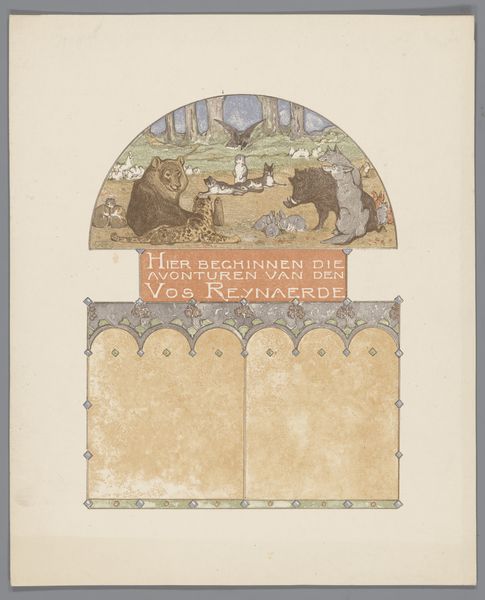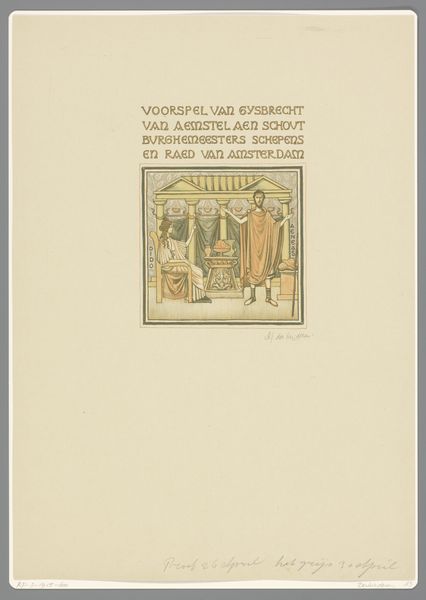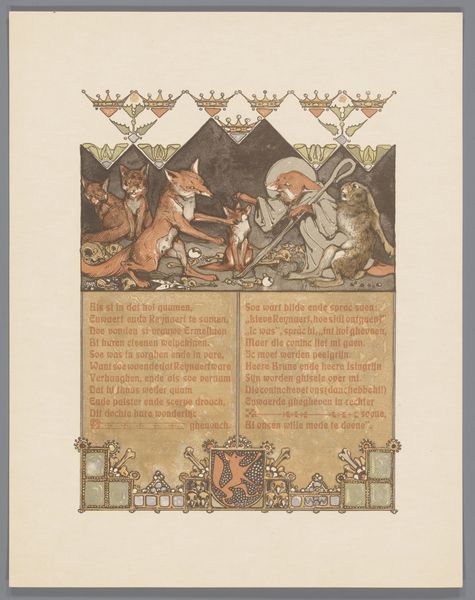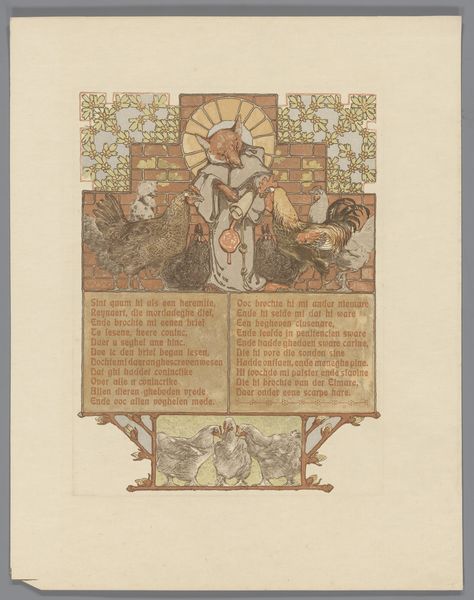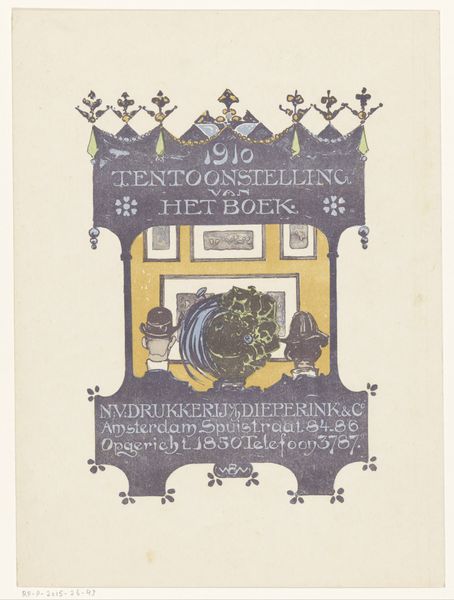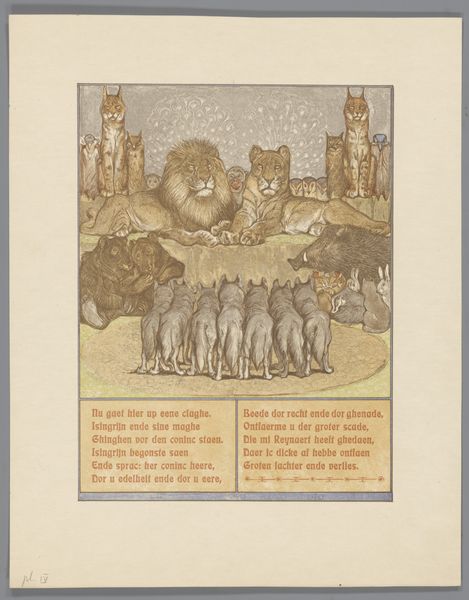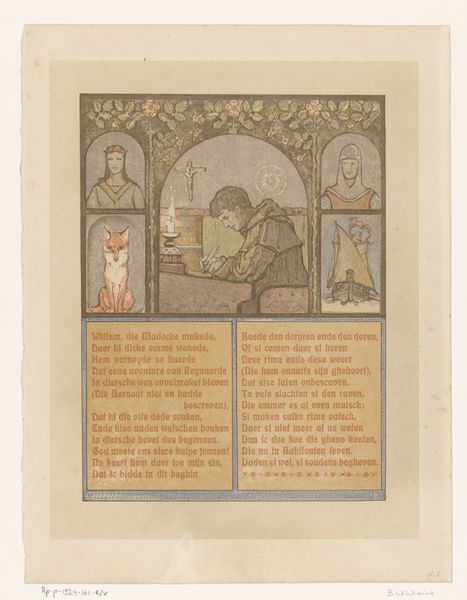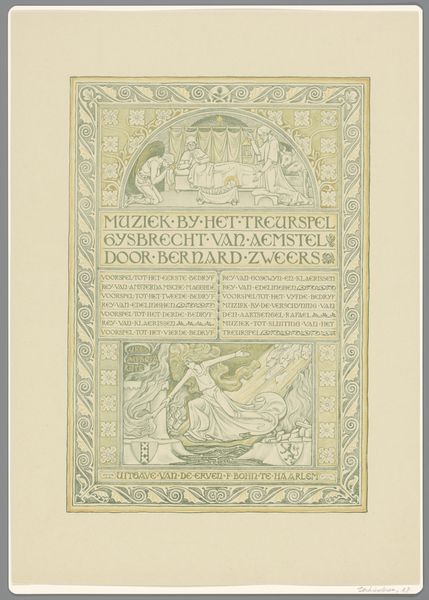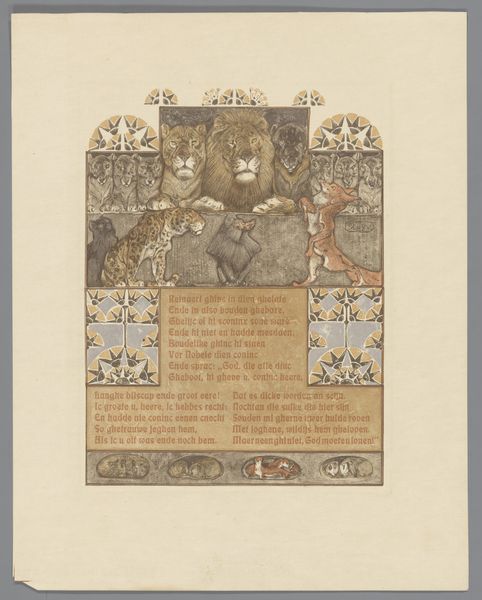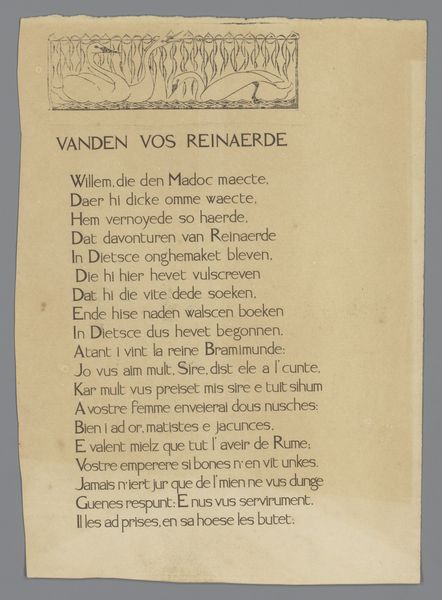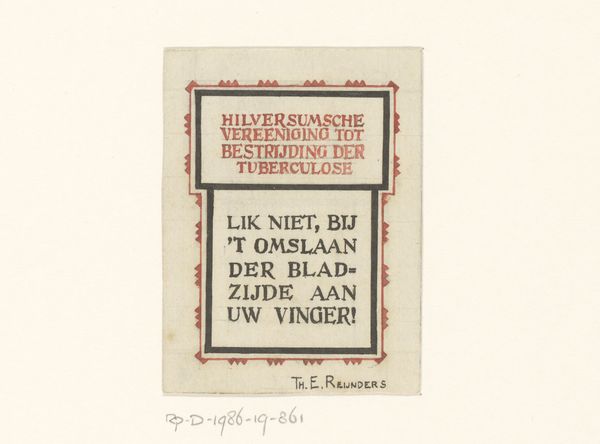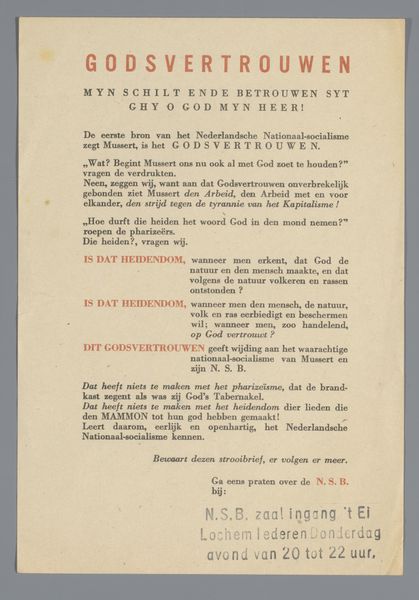
paper, ink
#
narrative-art
#
landscape
#
paper
#
text
#
ink
#
folk-art
Dimensions: height 346 mm, width 276 mm
Copyright: Rijks Museum: Open Domain
Curator: Looking at this work, entitled "Groep dieren uit Reinaert de Vos," which translates to "Group of Animals from Reynard the Fox," created around 1910 by Bernard Willem Wierink, I'm struck by the sense of stillness amidst the potential chaos implied by the text surrounding the animal scene. What’s your first impression? Editor: I’m drawn in by the soft colors, the muted tones on paper and ink; there’s a quiet, almost dreamlike quality to this gathering of animals, even though the text suggests adventure. There’s a real tension between the innocent presentation of the animals and the possible dark themes underneath. Curator: It's fascinating how the imagery subverts traditional power structures often embedded in folklore. The grouping of animals, typically with clear predator-prey relationships, becomes flattened and strangely harmonious, inviting questions about societal hierarchy and justice. Given the narrative surrounding Reynard, a character known for trickery, this flattening perhaps highlights systemic injustices. Editor: Exactly. Wierink is employing a very traditional art style here, referencing old manuscript illustration styles, while dealing with what still were contentious issues when looking through the lenses of gender and social class. This tension really grabs the eye. But also consider, for some, animal stories may reinforce negative stereotypes about marginalised groups. Is Wierink reflecting or perpetuating those problems here? Curator: These are the critical dialogues we must be willing to facilitate. Placing this work within its era, a time of nascent social change and evolving ideas around morality and justice, the seemingly simple presentation urges a closer look at whose voices were historically privileged. The text even includes a didactic bit on consequences – does Wierink engage that on his portrayal of the animals? Editor: He invites these reflections, doesn't he? And these complexities keep me returning to view "Groep dieren uit Reinaert de Vos" repeatedly, because in one small image so many narratives, counter-narratives, histories and theories come into focus. Curator: Agreed. There are countless analytical lenses from which one could view this, making it truly valuable to study in today’s landscape.
Comments
No comments
Be the first to comment and join the conversation on the ultimate creative platform.
